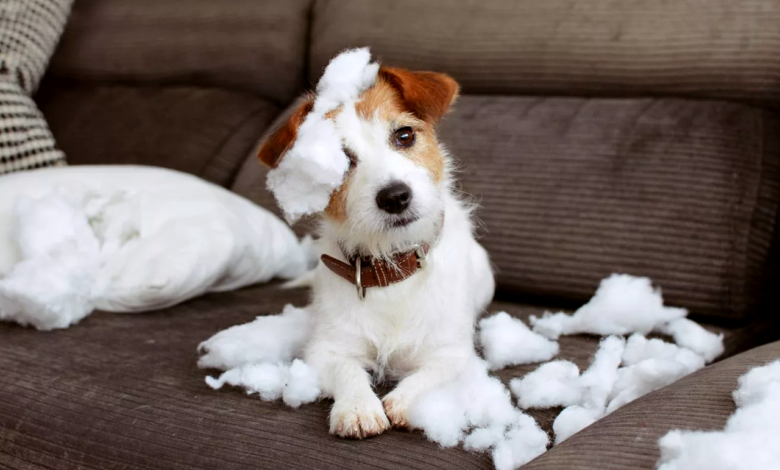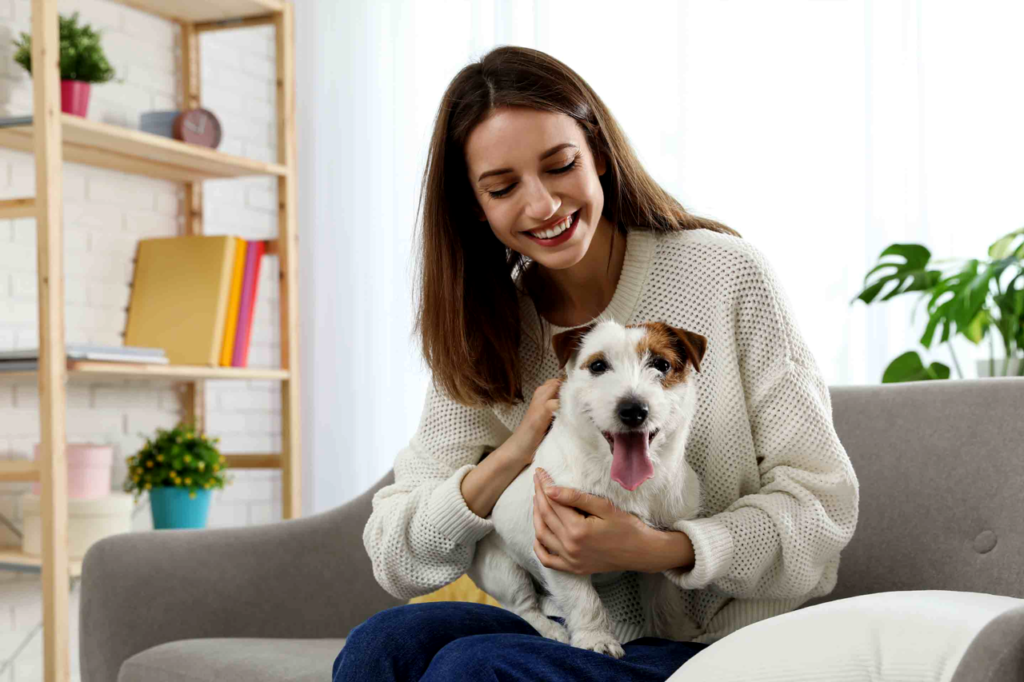
How to Manage Separation Anxiety in Pets
Separation anxiety in pets is a prevalent behavioral issue among pets, particularly dogs and cats. It occurs when pets become excessively anxious or distressed when separated from their owners or left alone for extended periods. This condition can lead to various problematic behaviors and negatively impact the well-being of both the pet and the owner. Understanding separation anxiety and implementing effective management strategies is essential for ensuring the happiness and health of pets.
Read More: Understanding Pet Anxiety: Identifying Triggers and Coping Mechanisms
How to Manage Separation Anxiety in Pets

Separation anxiety arises from the strong emotional bond and dependence that pets develop with their owners. When left alone, pets may experience intense feelings of fear, insecurity, and loneliness, leading to behaviors aimed at seeking comfort and companionship.
Common Signs and Symptoms
Signs of separation anxiety in pets can manifest differently depending on the individual animal, but common indicators include excessive vocalization (such as barking or meowing), destructive behavior (such as chewing furniture or scratching doors), inappropriate elimination, pacing, and attempts to escape.
Causes of Separation Anxiety
Several factors can contribute to the development of separation anxiety in pets, including:
Lack of Socialization
Pets that haven’t been adequately socialized or exposed to various environments and people during their early development stages may be more prone to separation anxiety.
Changes in Routine or Environment
Major life changes such as moving to a new home, the addition of a new family member, or significant alterations in the owner’s schedule can disrupt a pet’s sense of security and trigger anxiety.
Past Trauma or Abandonment
Pets that have experienced trauma, such as being abandoned or mistreated in the past, may develop separation anxiety as a result of fear and insecurity associated with being left alone.
Identifying if Your Pet Has Separation Anxiety
Recognizing the signs of separation anxiety is crucial for early intervention and effective management. Pet owners should observe their pet’s behavior and look for consistent patterns indicating distress when left alone.
Observing Behavior Patterns
Pay attention to how your pet behaves when you’re about to leave or when they’re left alone. Documenting their actions and reactions can help in identifying the severity of their anxiety and devising appropriate strategies for management.
Consulting with a Veterinarian
If you suspect that your pet is suffering from separation anxiety or if their symptoms are severe, consult with a veterinarian or animal behaviorist for a professional assessment and guidance on treatment options.
Tips for Managing Separation Anxiety

While managing separation anxiety in pets can be challenging, implementing the following strategies can help alleviate their distress and improve their quality of life:
Gradual Desensitization
Gradually expose your pet to being alone by starting with short periods of separation and gradually increasing the duration over time. This gradual approach can help desensitize them to the experience and build their confidence in being alone.
Providing Enrichment and Stimulation
Keep your pet mentally and physically stimulated by providing interactive toys, puzzle feeders, and engaging activities to keep them occupied and mentally stimulated while you’re away.
Creating a Safe Space
Designate a comfortable and secure area for your pet to retreat to when they’re feeling anxious or stressed. This could be a cozy bed, crate, or room with their favorite toys and blankets where they feel safe and secure.
Establishing a Routine
Maintaining a consistent daily routine can provide structure and predictability for pets, which can help reduce anxiety and promote a sense of security.
Consistent Feeding and Walking Schedules
Stick to regular mealtimes and exercise routines to establish a predictable schedule for your pet, helping them feel more secure and less anxious.
Incorporating Calming Activities
Incorporate calming activities such as gentle massage, soothing music, or aromatherapy to help relax your pet and reduce their anxiety levels.
Utilizing Training Techniques
Positive reinforcement training techniques can help modify your pet’s behavior and build their confidence in being alone.
Positive Reinforcement Methods
Reward desirable behaviors such as calmness and independence with treats, praise, and affection to reinforce positive associations with being alone.
Seeking Professional Help if Needed
If your pet’s separation anxiety is severe or persists despite your efforts, consider seeking assistance from a certified animal behaviorist or trainer who specializes in anxiety-related issues.
The Role of Exercise
Regular exercise is essential for maintaining your pet’s physical and mental well-being, including managing separation anxiety.
Importance of Physical Activity
Engage your pet in daily exercise sessions such as walks, playtime, or interactive games to release pent-up energy and reduce stress.
Exercise Ideas for Pets with Separation Anxiety
Choose activities that your pet enjoys and tailor them to their preferences and energy levels. Interactive toys, agility courses, and obedience training can provide mental stimulation and distraction from anxiety.
Addressing Separation Anxiety in Different Pets
While dogs are commonly associated with separation anxiety, other pets such as cats, birds, and rabbits can also experience similar issues.
Dogs
Implementing training techniques, providing enrichment, and ensuring regular exercise are key strategies for managing separation anxiety in dogs.
Cats
Create a stimulating environment with plenty of hiding spots, vertical space, and interactive toys to keep cats entertained and reduce stress.
Other Common Pets (Birds, Rabbits, etc.)
Provide appropriate environmental enrichment, socialization opportunities, and companionship to alleviate anxiety in non-traditional pets.
Seeking Support from Professionals

For severe cases of separation anxiety or if home-based strategies aren’t effective, seeking professional help is crucial for the well-being of your pet.
Consulting with a Veterinary Behaviorist
A veterinary behaviorist can conduct a thorough assessment of your pet’s behavior and develop a comprehensive treatment plan tailored to their specific needs.
Therapy Options for Pets
Behavior modification therapy, medication, and alternative therapies such as acupuncture or herbal remedies may be recommended by professionals to help manage severe cases of separation anxiety.
Read More: 5 Ways to Help Your Dog Overcome Separation Anxiety
FAQs
- Can all pets experience separation anxiety? While dogs are more commonly associated with separation anxiety, other pets such as cats, birds, and rabbits can also experience similar issues, albeit less frequently.
- How can I tell if my pet’s behavior is due to separation anxiety or another issue? Consulting with a veterinarian or animal behaviorist can help properly diagnose your pet’s behavior and distinguish between separation anxiety and other underlying medical or behavioral issues.
- Are there any natural remedies that can help alleviate my pet’s separation anxiety? Some pet owners find herbal remedies such as chamomile or valerian root, as well as CBD products, to help reduce their pet’s anxiety. However, it’s essential to consult with a veterinarian before trying any natural remedies or supplements.
- Can separation anxiety be cured completely? While separation anxiety may never be completely cured, it can be effectively managed and significantly improved with the right combination of behavioral interventions, environmental modifications, and professional guidance.
- What should I do if my pet’s separation anxiety doesn’t improve with home-based strategies? If your pet’s separation anxiety persists despite your efforts, it’s essential to seek professional help from a certified animal behaviorist or veterinarian who specializes in behavior problems to develop a tailored treatment plan for your pet’s specific needs.
The Final Words
Managing separation anxiety in pets requires patience, understanding, and a proactive approach from pet owners. By recognizing the signs, implementing effective management strategies, and seeking professional guidance when needed, pet owners can help their furry companions feel more secure and content when left alone.








One Comment